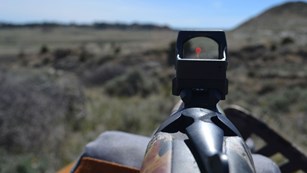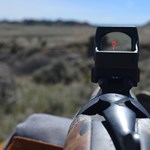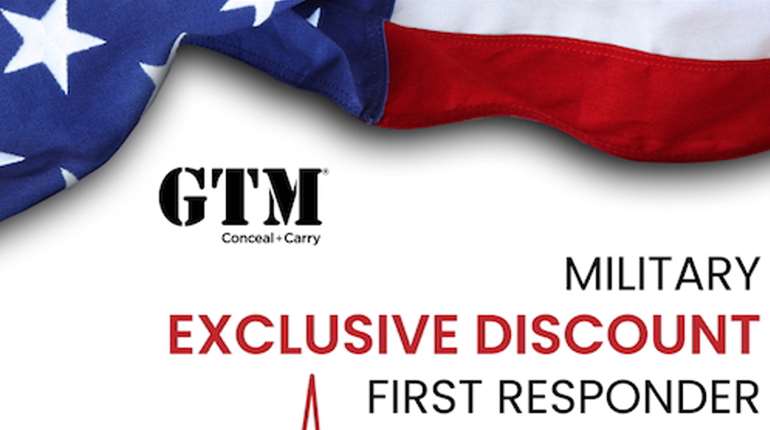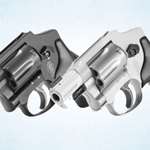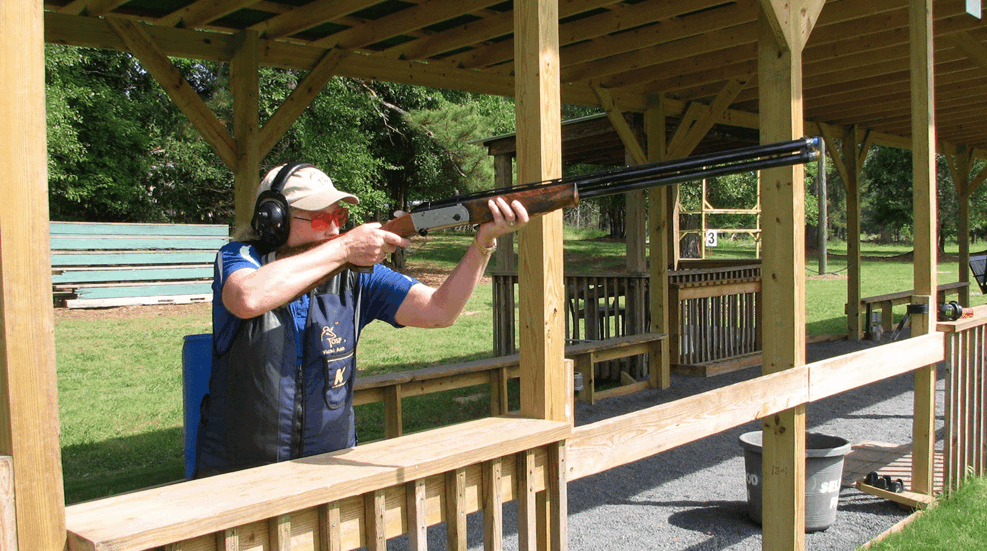
Shotguns shouldn’t hurt you when you shoot them. Sure, after a day of goose hunting, your shoulder might be a little sore, or if you’re new to shotguns, it might take you a while to adjust to recoil. However, generally speaking, a shotgun shouldn’t be causing you pain. If you shoot a round of sporting clays and end up with a bruise on your jawline or cheek, excessive tenderness above your breast, or a swollen and painful shoulder or upper arm, something is wrong.
That something is almost certainly a gun fit problem. Holding the gun improperly will also contribute to pain (keep your face on the stock and mount it into your shoulder pocket, not your upper arm, please!), but an ill-fitting gun will hurt you even if you’re using perfect shooting posture—which you almost certainly aren’t, because a gun that doesn’t fit will cause you to adjust your gun mount to compensate.
Shotguns come out of the factory designed to fit a man who’s between 5’9” and 5’11” and 175 lbs., give or take. If that’s not you, and maybe even if it is, that shotgun will fit you poorly and won’t shoot where you are looking—in short, a poor-fitting shotgun leads to lots of misses and plenty of pain.
How Can You Tell a Shotgun Doesn’t Fit?
You can mount the gun in front of a mirror and check. Visually and physically check that it is unloaded and remove any ammo from the room, then stand facing a mirror. Close your eyes and mount the gun comfortably. Open your eyes. What do you see? What you want to see is the colored part of your eye sitting cleanly on top of the shotgun’s rib like a ball sitting on a table. You shouldn’t actually see the rib or any part of the gun’s barrel except the front bead, if there is one. If you see rib, or if your eye sits below or above the rib line, you most likely have a gun fit problem.
Modifying a shotgun stock so that it fits you perfectly is a job for an experienced stock fitter—which is not the same as a gunsmith, although some do both. Gun fit is a complicated art and science, but here are the four primary things a fitter is going to look at to determine why a gun is hurting you and how to fit it properly.
1. The Length of Pull Is All Wrong
This is the distance from the end of the buttstock (at its center point) to the trigger. Most guns come from the factory with a length of pull (LOP) around 14½”, but this will be too long for many smaller-statured shooters. If the LOP is too long for you, you’ll have trouble controlling the gun. Worse, you might lean backward to compensate, which will result in more felt recoil hitting your shoulder. If you’re not sure if a gun’s LOP is just right for you, grab a buddy and have them measure you. Mount the gun using a proper shooting stance. Then, have your friend measure from the tip of your nose to the knuckle at the base of your thumb on your trigger hand. That distance should be about 1” to 1½”. If it’s longer, the LOP is too long for you.
2. The Stock Needs More Pitch
Look at the back edge of the gun’s buttstock from the side. Is it perfectly perpendicular to the gun’s rib, or does it angle in slightly at the bottom? That angle is called pitch, and it’s there to make the gun more comfortable to shoot.
Standard pitch on an off-the-shelf gun is around 4 degrees, but that’s often not enough pitch for female shooters. Because we have sensitive breast tissue in the area where the bottom of the stock meets our body, we often need a little more pitch to keep from bruising our chests.
3. The Drop Doesn’t Suit Your Face
Look at your buttstock from the side again, and imagine that the rib line keeps going back straight over the top of the buttstock. See the difference between the rib line and the top of the stock? That’s the drop.
Gun fitters measure drop at the front of the buttstock (the peak), the center and the back of the buttstock (the heel). Most modern shotguns will have more drop at the heel than they have at the peak. A gun that has the perfect amount of drop for you will place the top of the comb, which is the part that touches your face, right below your cheekbone, with the flesh of your cheek spilling over the top of the stock just a tad if you’re applying some cheek pressure (which you should). Because women tend to have proportionately longer necks and higher cheekbones than men, we often need a higher comb than what comes on standard shotguns. Many women’s guns come with a Monte Carlo stock for this reason.
If a shotgun’s comb is too low for you, you will not get the proper sight picture when you mount the gun—that eyeball-sitting-on-top-of-the-rib picture you should see in the mirror—so you’ll be forced to mount the gun in all sorts of screwy ways to try to see properly. An improperly mounted shotgun is going to cause you more pain to shoot and cause the recoil to impact parts of your body that it normally wouldn’t.
4. The Cast Isn’t Right for You
Look at that buttstock one more time, this time from directly overhead, imagining the rib line extending back over the top of the stock again. Does the rib line split the comb exactly in half, or does the comb extend a little more to one side or the other? The amount to which it “leans” or “bends” to one side is called cast. If there’s a little more comb on the right side, it’s called cast-off; a little more comb to the left side is called cast-on.
Most right-handed shooters will need a little cast-off to shoot comfortably and to hit where they are looking when they shoot. If you mount the gun to the mirror and your pupil is sitting to the right or the left of the rib line rather than centered above it, your gun’s cast needs to be adjusted for you.
A gun that doesn’t have enough cast will force you to roll your face/cheek over the top of the stock in order to see properly, and this can cause the gun to slap you in the face as it recoils with the shot.
Many of today’s shotguns come with spacers and inserts that allow you to adjust LOP and some other fit issues directly, but they are usually inadequate to completely fit a gun to a small-statured shooter. The best advice for avoiding pain when shooting a shotgun is to have a stock fitted specifically for you and to practice consistently, including lots of dry-mounting practice at home, to make sure your shooting posture and stance is correct. Without a consistent gun mount and proper stance, gun fit is a bit of a moving target. This is somewhat of a which-comes-first situation, but a good stock fitter can point you in the right direction.








